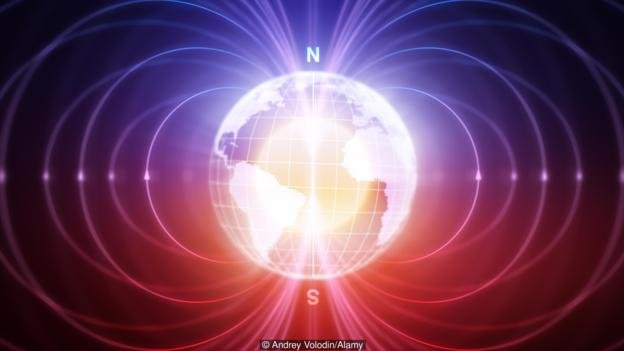
© Andrey Volodin/Alamy
If there's any subject that perfectly encapsulates the idea that science is hard to understand, it's quantum physics. Scientists tell us that the miniature denizens of the quantum realm behave in seemingly impossible ways: they can exist in two places at once, or disappear and reappear somewhere else instantly.
The one saving grace is that these truly bizarre quantum behaviours don't seem to have much of an impact on the macroscopic world as we know it, where "classical" physics rules the roost.
Or, at least, that's what scientists thought until a few years ago.
Quantum processes might be at work behind some very familiar processesNow that reassuring wisdom is starting to fall apart. Quantum processes may occur not quite so far from our ordinary world as we once thought.
Quite the opposite: they might be at work behind some very familiar processes, from the photosynthesis that powers plants - and ultimately feeds us all - to the familiar sight of birds on their seasonal migrations. Quantum physics might even play a role in our sense of smell.
In fact, quantum effects could be something that nature has recruited into its battery of tools to make life work better, and to make our bodies into smoother machines. It's even possible that we can do more with help from the strange quantum world than we could without it.
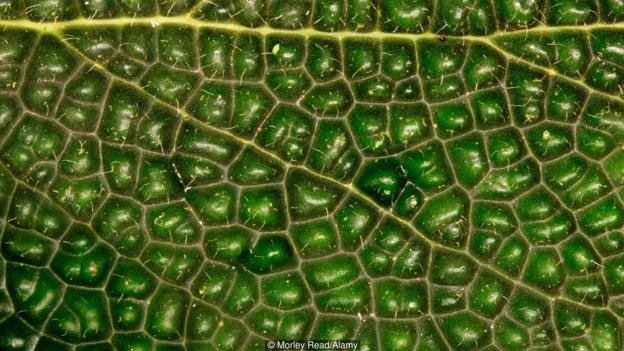
© Morley Read/AlamyPhotosynthesis looks easy
The trouble is, this tiny pinball machine works suspiciously well. Classical physics suggests the excited electron should take a certain amount of time to career around inside the photosynthetic machinery in the cell before emerging on the other side. In reality, the electron makes the journey far more quickly.
What's more, the excited electron barely loses any energy at all in the process. Classical physics would predict some wastage of energy in the noisy business of being batted around the molecular pinball machine. The process is too fast, too smooth and too efficient. It just seems too good to be true.
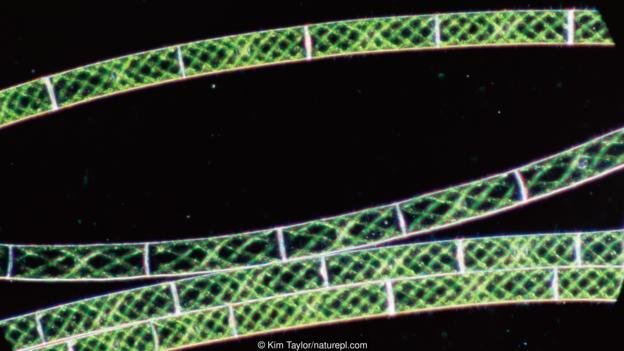
© Kim Taylor/naturepl.comInside the photosynthetic machinery
Then, in 2007,
photosynthesis researchers began to see the light. Scientists spotted signs of quantum effects in the molecular centres for photosynthesis. Tell-tale signs in the way the electrons were behaving opened the door to the idea that quantum effects could even be playing an important biological role.
This could be part of the answer to how the excited electrons pass through the photosynthetic pinball machine so quickly and efficiently. One quantum effect is the ability to exist in many places at the same time - a property known as quantum superposition. Using this property, the electron could potentially explore many routes around the biological pinball machine at once. In this way it could almost instantly select the shortest, most efficient route, involving the least amount of bouncing about.
Quantum physics had the potential to explain why photosynthesis was suspiciously efficient - a shocking revelation for biologists.
"I think this was when people started to think that something really exciting was going on," says
Susana Huelga, a quantum physicist at Ulm University in Germany.
Quantum physics had the potential to explain why photosynthesis was suspiciously efficient - a shocking revelation for biologistsQuantum phenomena such as superposition had previously been observed mostly under highly controlled conditions. Typical experiments to observe quantum phenomena involve cooling down materials to bitingly cold temperatures in order to dampen down other atomic activity that might drown out quantum behaviour. Even at those temperatures, materials must be isolated in a vacuum - and the quantum behaviours are so subtle that scientists need exquisitely sensitive instruments to see what's going on.
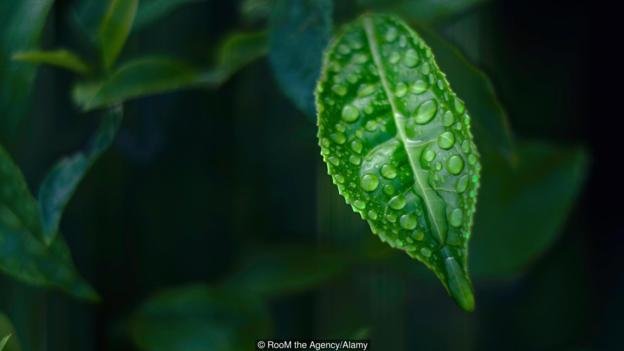
© RooM the Agency/Alamy
The wet, warm, bustling environment of living cells is the last place you might expect to see quantum events. "[But] even here, quantum features are still alive," Huelga says.
Of course, just because these quantum features make an unexpected appearance in living cells, it doesn't necessarily mean that they're playing a useful role. There are theories as to how quantum superposition may be speeding up the process of photosynthesis, but a hard link between this behaviour and a biological function is still missing, Huelga says.
"The next step will be having some quantitative results saying that the efficiency of this biological machine is this due to quantum phenomena."
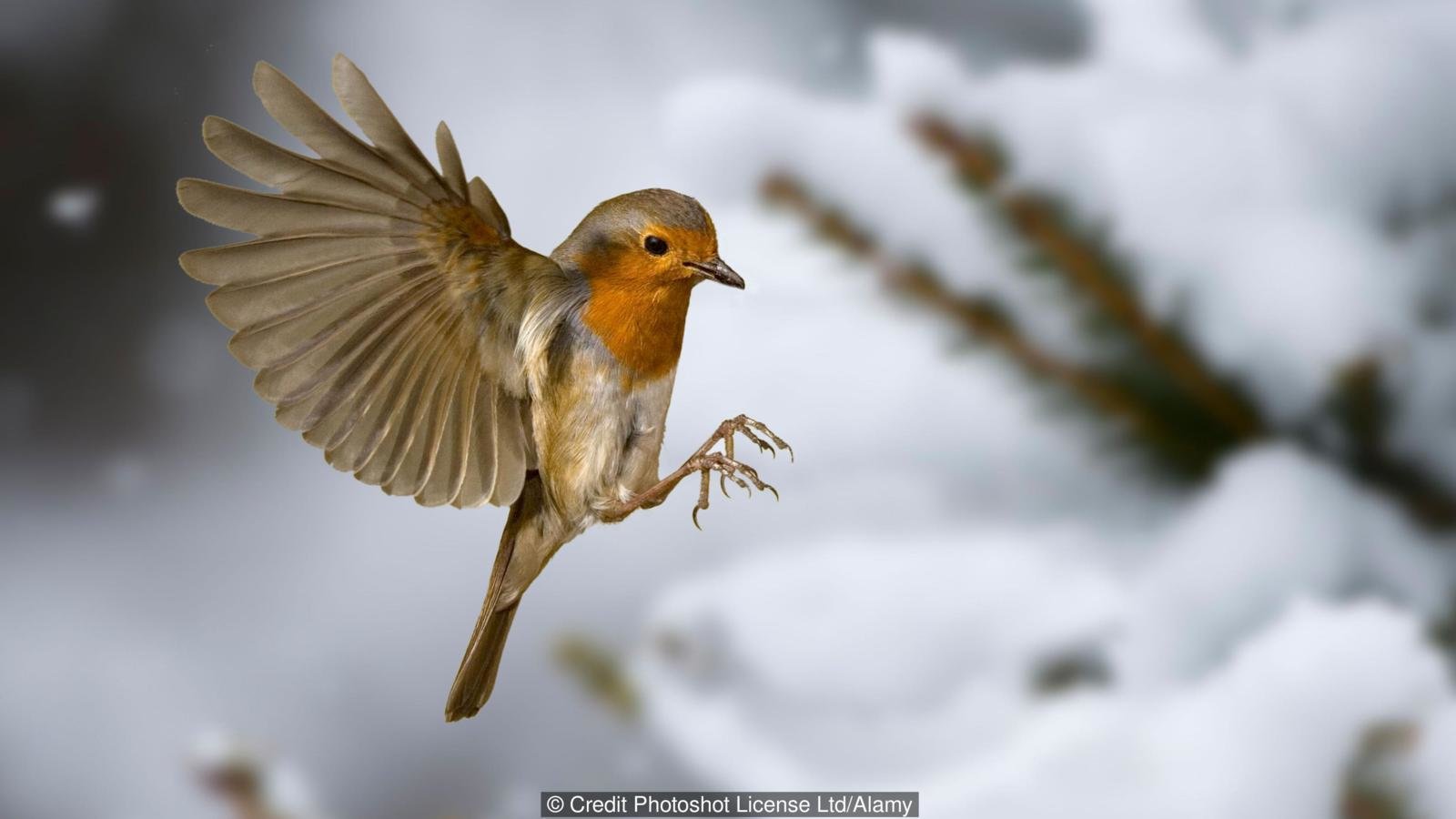
© Photoshot License Ltd/AlamyHow do robins know which way to fly?
Quantum effects in biology aren't just a quirk of plants and other organisms that do the peculiar job of turning sunlight into fuel. They may also provide an answer to a scientific puzzle that's been around since the 19th Century: how migratory birds know which way to fly.
Quantum effects in biology might explain how migratory birds know which way to flyIn a journey thousands of kilometres long, a migratory bird such as the European robin will often fly to southern Europe or North Africa to escape particularly cold winters. This journey over an unfamiliar landscape would be dangerous, if not impossible, without a compass. Start the journey in the wrong direction and a robin setting off from Poland might end up in Siberia rather than Morocco.
A biological compass isn't an easy thing to picture. If there was some form of tiny magnetic iron needle-like structure spinning deep inside a robin's brain or eyes, biologists would almost certainly know about it by now. But no such luck: a biological structure that could do the job has never been found.
Another theory, first proposed in the late 1970s, suggested an alternative way birds might know which way to fly: perhaps they carry a chemical compass that relies on quantum phenomena to tell which way is north.

© Andrey Volodin/Alamy
, a chemist at the University of Oxford in the UK, says that such a chemical compass would work with the help of molecules with excitable lone electrons, known as radicals, and a quantum property known as spin.
Electrons in molecules usually come in pairs, spinning in opposite directions and effectively cancelling out each other's spin. A "lone" electron spinning on its own, though, isn't cancelled out. This means it is free to interact with its environment - including magnetic fields.
A "lone" electron spinning on its own is free to interact with its environment - including magnetic fieldsAs it turns out, Hore says, robins can become temporarily disorientated when exposed to radio waves - a type of electromagnetic wave - of a particular range of frequencies. If a radio wave has a frequency of just the same rate that an electron spins, it could cause the electron to resonate. This is the same kind of resonance you might experience when you sing in the shower - certain notes sound a lot louder and fuller than others. Hitting the right radio wave frequency will make the electron vibrate more vigorously in the same way.
But what does this have to do with the idea that birds use a chemical compass? The theory is that ordinarily, radicals at the back of the bird's eye respond to the Earth's magnetic field. The magnetic field will cause the electron to leave its spot in the chemical compass and start a chain of reactions to produce a particular chemical. As long as the bird keeps pointing in the same direction, more of the chemical will build up.
So the amount of this chemical present is a source of information, generating signals in the bird's nerve cells. As part of many different environmental cues, this information will inform the bird about whether it is pointing towards Siberia or Morocco.
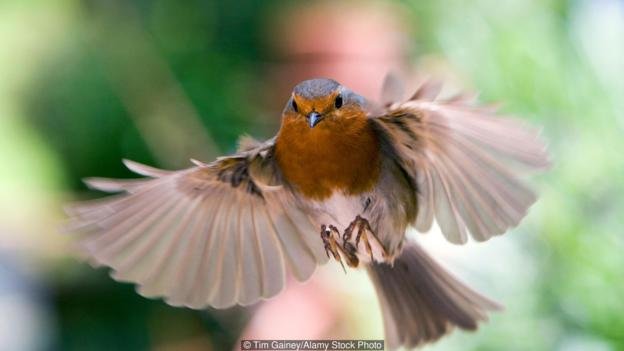
© Tim Gainey/Alamy Stock PhotoA bird's nervous system tells it where to go
The radio wave observation is an important one because we would expect anything that interferes with electron spin to be able, at least in principle, to disrupt the chemical compass. It can be as useful to study why something sometimes doesn't work as it is to study why it generally does work.
Even so, the quantum compass remains an idea. It hasn't yet been found in nature. Hore has been focusing on finding out how the quantum compass can work in principle, using molecules that theoretically ought to be able to do the job.
The quantum compass remains an idea - it hasn't yet been found in nature"We've done experiments on model compounds to establish the principle that one can make a chemical compass," Hore says. These have helped to pin down some molecules that do seem to be fit for the purpose of detecting magnetic fields, he says. "What we don't know is whether they behave in exactly the same way inside a cell in the bird's body."
The magnetic compass is just part of a complex and poorly understood system of navigation in birds, Hore says. The quantum theory for how such a compass works may be the best out there so far, but there's still a lot of ground to cover to link up the behavioural patterns of birds with the theoretical chemistry.

© Cultura Creative RF/AlamyThe science of smell
There is one field that seems tantalisingly close to demonstrating the reality of quantum biology, though: the science of smell.
Exactly how our noses are capable of distinguishing and identifying a myriad of differently shaped molecules is a big challenge for conventional theories of olfaction. When a smelly molecule wafts into one of our nostrils, no one is yet entirely sure what happens next. Somehow the molecule interacts with a sensor - a molecular receptor - embedded in the delicate inner skin of our nose.
Exactly how are our noses capable of distinguishing and identifying a myriad of differently shaped molecules?A well-trained human nose can distinguish between thousands of different smells. But how this information is carried in the shape of the smelly molecule is a puzzle. Many molecules that are almost identical in shape, but for swapping around an atom or two, have very different smells. Vanillin smells of vanilla, but eugenol, which is very similar in shape, smells of cloves. Some molecules that are a mirror image of each other - just like your right and left hand - also have different smells. But equally, some very differently shaped molecules can smell almost exactly the same.
Luca Turin, a chemist at the BSRC Alexander Fleming institute in Greece, has been working to crack the way that the properties of a molecule encode its scent. "There is something very, very peculiar at the core of olfaction, which is that our ability to somehow analyse molecules and atoms is inconsistent with what we think we know about molecular recognition," Turin says.
He argues that the molecule's shape alone isn't enough to determine its smell. He says that it's the quantum properties of the chemical bonds in the molecule that provides the crucial information.
According to Turin's quantum theory of olfaction, when a smelly molecule enters the nose and binds to a receptor, it allows a process called quantum tunnelling to happen in the receptor.
When a smelly molecule enters the nose and binds to a receptor, it allows quantum tunnelling to happenIn quantum tunnelling, an electron can pass through a material to jump from point A to point B in a way that seems to bypass the intervening space. As with the bird's quantum compass, the crucial factor is resonance. A particular bond in the smelly molecule, Turin says, can resonate with the right energy to help an electron on one side of the receptor molecule leap to the other side. The electron can only make this leap through the so-called quantum tunnel if the bond is vibrating with just the right energy.
When the electron leaps to the other site on the receptor, it could trigger a chain reaction that ends up sending signals to the brain that the receptor has come into contact with that particular molecule. This, Turin says, is an essential part of what gives a molecule its smell, and the process is fundamentally quantum.
"Olfaction requires a mechanism that somehow involves the actual chemical composition of the molecule," he says. "It was that factor that found a very natural explanation in quantum tunnelling."
The strongest evidence for the theory is Turin's discovery that two molecules with extremely different shapes can smell the same if they contain bonds with similar energies.
Turin predicted that boranes - relatively rare compounds that are hard to come by - smelled very like sulphur, or rotten eggs. He'd never smelt a borane before, so the prediction was quite a gamble.
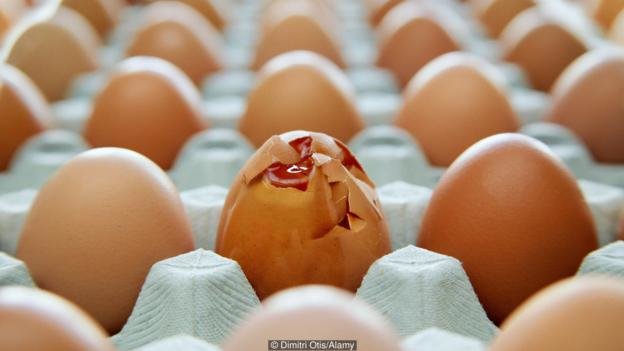
© Dimitri Otis/AlamyBoranes smell like rotten eggs
He was right. Turin says that, for him, that was the clincher. "Borane chemistry is vastly different - in fact there's zero relation - to sulphur chemistry. So the only thing those two have in common is a vibrational frequency. They are the only two things out there in nature that smell of sulphur."
While that prediction was a great success for the theory, it's not ultimate proof. Ideally Turin wants to catch these receptors in the act of exploiting quantum phenomena. He says they are getting "pretty close" to nailing those experiments. "I don't want to jinx it, but we're working on it," he says. "We think we have a way to do it, so we're definitely going to have a go in the next few months. I think that nothing short of that will really move things forward."
Turin wants to catch these receptors in the act of exploiting quantum phenomenaWhether or not nature has evolved to make use of quantum phenomena to help organisms make fuel from light, tell north from south, or distinguish vanilla from clove, the strange properties of the atomic world can still tell us a lot about the finer workings of living cells
"There is a second way of seeing how quantum mechanics interacts with biology, and that is by sensing and probing," Huelga says. "Quantum probes would be able to shed light on many interesting things in the dynamics of biological systems."
And whether or not nature got there first, it's no excuse for us not to mix biology with quantum phenomena to develop new technologies, she says. Making use of quantum effects in biologically inspired photovoltaic cells, for instance, could give solar panels a huge boost in efficiency. "At this very moment there is quite a lot of activity in organic photovoltaics, to see whether with natural or artificial structures one can have an enhanced efficiency that exploit quantum effects."
So even if alternative, as yet entirely unknown mechanisms emerge for these stubborn biological puzzles, biologists and quantum physicists certainly won't have seen the last of each other. "This will definitely be a story with a happy end," she says.
Reader Comments
to our Newsletter